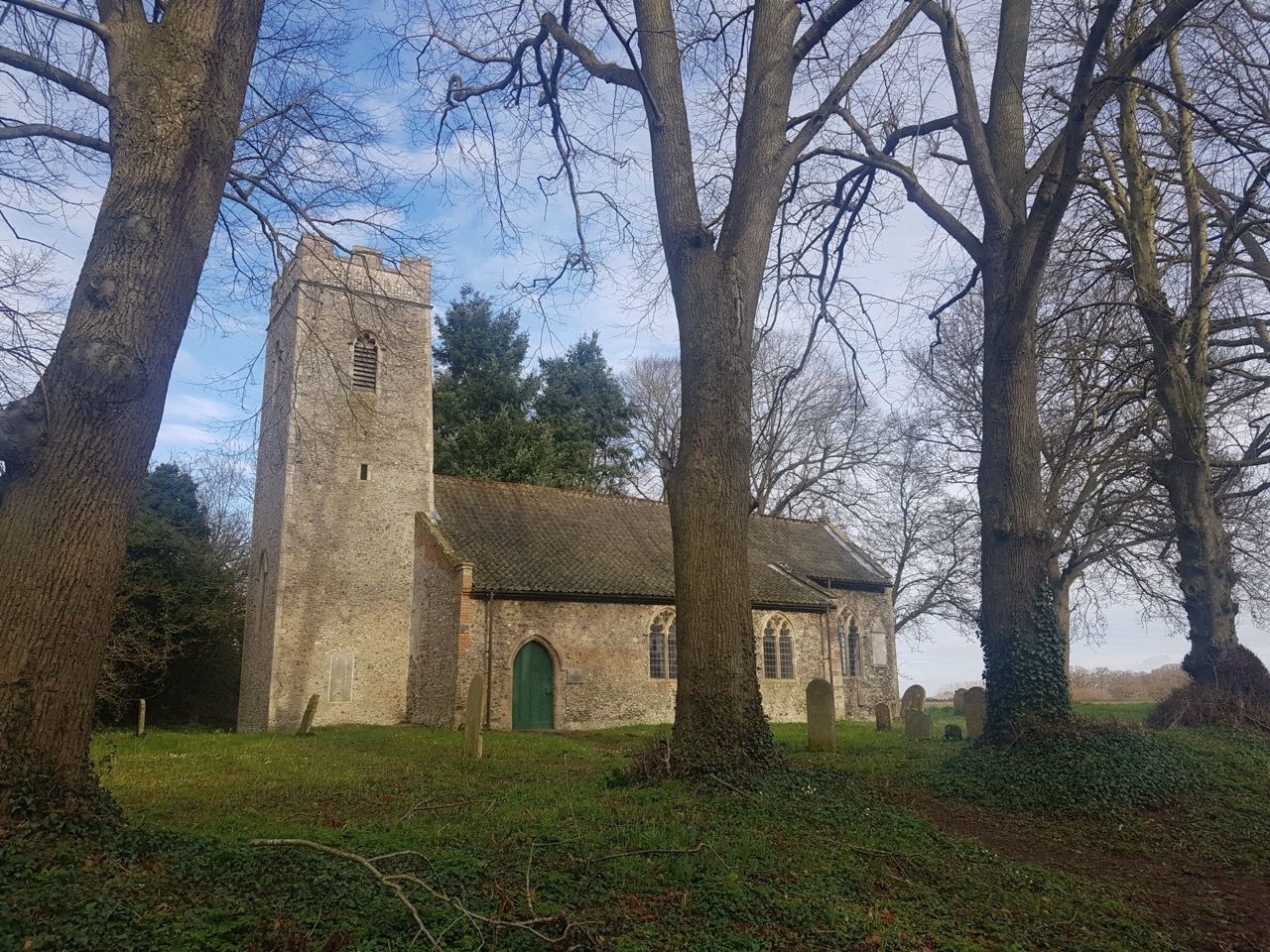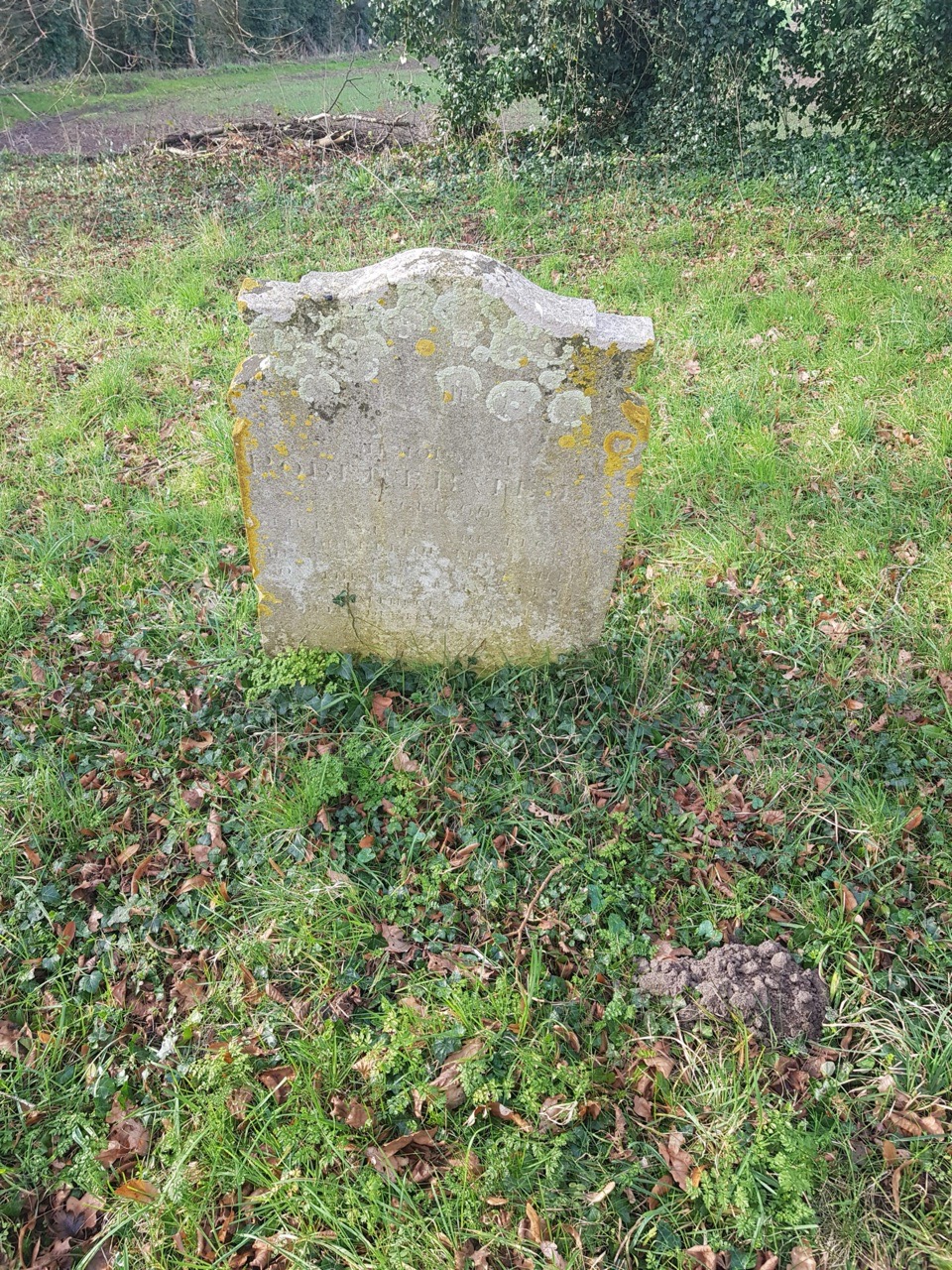Little Witchingham – St. Faith’s Church
I don’t know why I haven’t been to this beautiful church before, especially given that it’s not overly far from Norwich. Anyway, it was part of the walk before the 2020 Norfolk Ramblers AGM, and a quite marvellous choice of location by the walk leader.
Most of what is currently here is from the fourteenth century, although there is some evidence of the previous twelfth century church. Of the main structure, only the tower is later and is from the fifteenth century, although it is perhaps the interior that makes this church exceptional.
The wall paintings are the highlight of this church, dating primarily from the fourteenth century, with one large section telling the story of St. George and the Dragon. Only the reddish elements of the artworks now remain, a reminder of just how bright churches once were before the Reformation changed that situation somewhat. One wall has been prepared for painting, but there are no artworks, it’s thought because the Black Death put paid to that little project. There is though, on the right hand side of the chancel window, some faded text which is thought to have been added after the Reformation, so there was not a total absence of artwork.
The building is now looked after by the Churches Conservation Trust, who have done a marvellous job of ensuring the interior is protected and they’ve also prepared a comprehensive history of the church. The church is disused and it has been since the 1920s, although some bright spark thought about demolishing it in the 1940s and rebuilding it in Bawdeswell.
It is primarily through the efforts of Eve Baker, a local historian, who found the church in a perilous state in 1967 and noticed that the damp walls were showing evidence of wall paintings underneath. There were initial studies in the 1970s which uncovered many of the wall paintings, with further evidence being found in the 1980s. Norfolk Record Office hold a collection of photos taken in 1970s of the state of the wall paintings, an interesting snapshot in the history of the church.
Through the efforts of many, not least Eve, the church was restored and its interior protected. Well, sort of protected, someone pinched a load of their floor tiles in 2008, but welcome to the modern world…. It’s now open from 10.00 until 16.00 every day of the week and hopefully no-one else will pinch anything.
The chancel of the church. There’s little furniture in the church, which adds somewhat to the whole interior given how impressive the wall paintings are. The Renaissance pulpit from the church survives, but it’s now at St. Faith’s Church in Lenwade.
The blocked doorway in the north wall, with decorations around it.
The other side of that blocked doorway.
Visible here is how the level of the wall was raised when the church roof was reconstructed.
The section just past the window used to be inside the church, but the wall was rebuilt a little further forwards in the late eighteenth century.
All told, this is a quite marvellous church and it’s partly a miracle that it’s still here. It made it through the Victorian period relatively unchanged, a fate not shared by all churches, but the congregation size wasn’t there to make it sustainable. Without the intervention of a handful of people, not least Eve Baker, this church could well have just fallen down and been lost.









